Sign up for The Envelope
Get exclusive awards season news, in-depth interviews and columnist Glenn Whipp’s must-read analysis straight to your inbox.
You may occasionally receive promotional content from the Los Angeles Times.
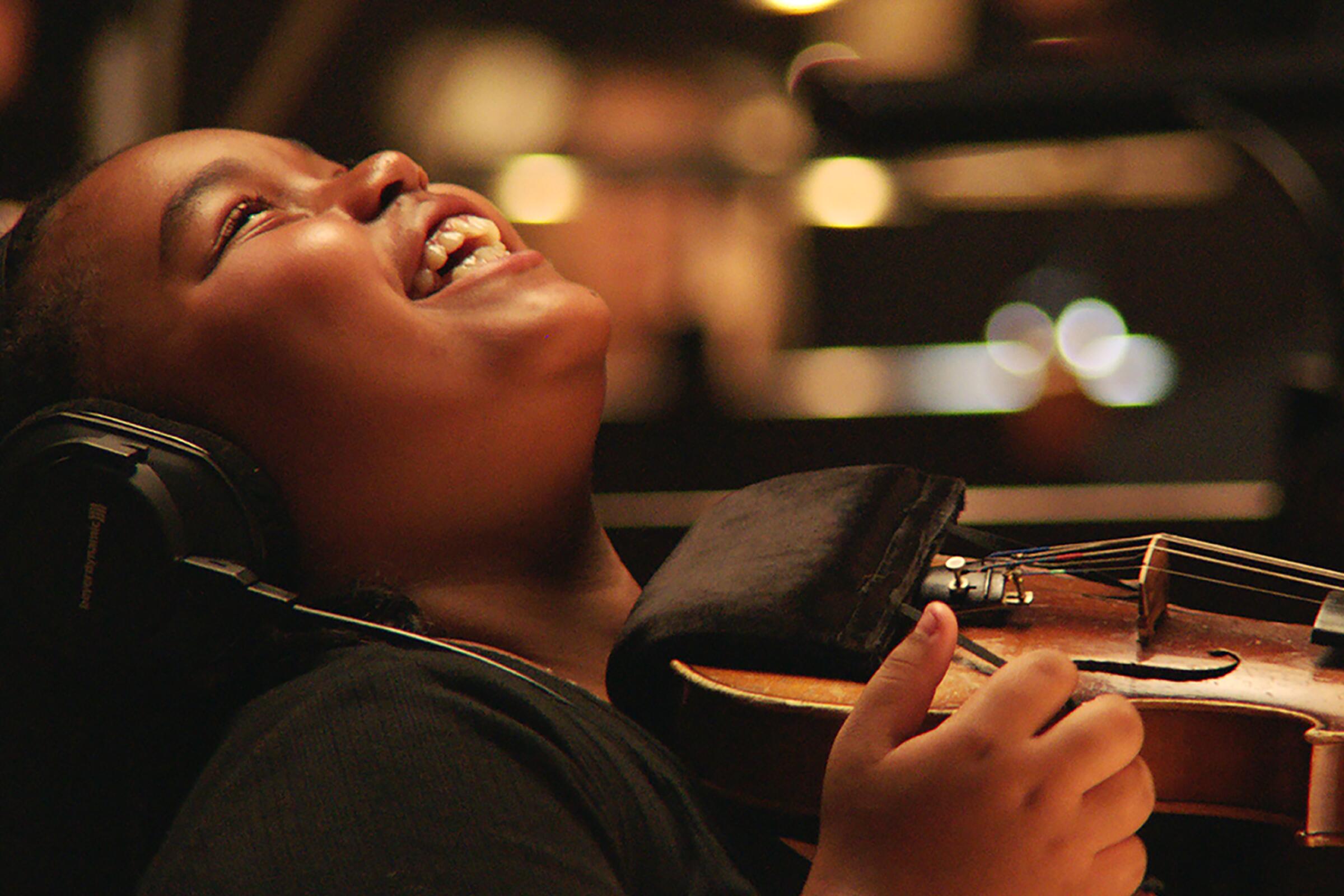
The stories of hardship, dedication and a love for music in the Oscar-nominated short documentary “The Last Repair Shop” — about the unseen heroes servicing musical instruments for Los Angeles Unified School District students — tend to leave no viewer unmoved, least of all the film’s co-directors, Ben Proudfoot and Kris Bowers. (The film is co-distributed by Searchlight and L.A. Times Studios.)
“I still involuntarily cry, and we’ve been watching this movie for four years,” says LAUSD alumnus Bowers, a sought-after film and television composer when not collaborating with Proudfoot. (They also made the 2021 Oscar-nominated “A Concerto Is a Conversation.”) Bowers cites the tale of Paty — a brass instrument technician who, before getting hired at the shop, struggled to survive — as especially affecting, having become a father himself since beginning work on the film. “Her vulnerability and openness about what it was like to be a single mom without the resources to provide for her family, it breaks me down.”
Count L.A.’s own leaders among the affected, too. Says Proudfoot, “We were at City Hall, and these tough council people were like, ‘I played the trumpet!’ ” He calls the film “this special key that unlocks everybody’s childhood.”
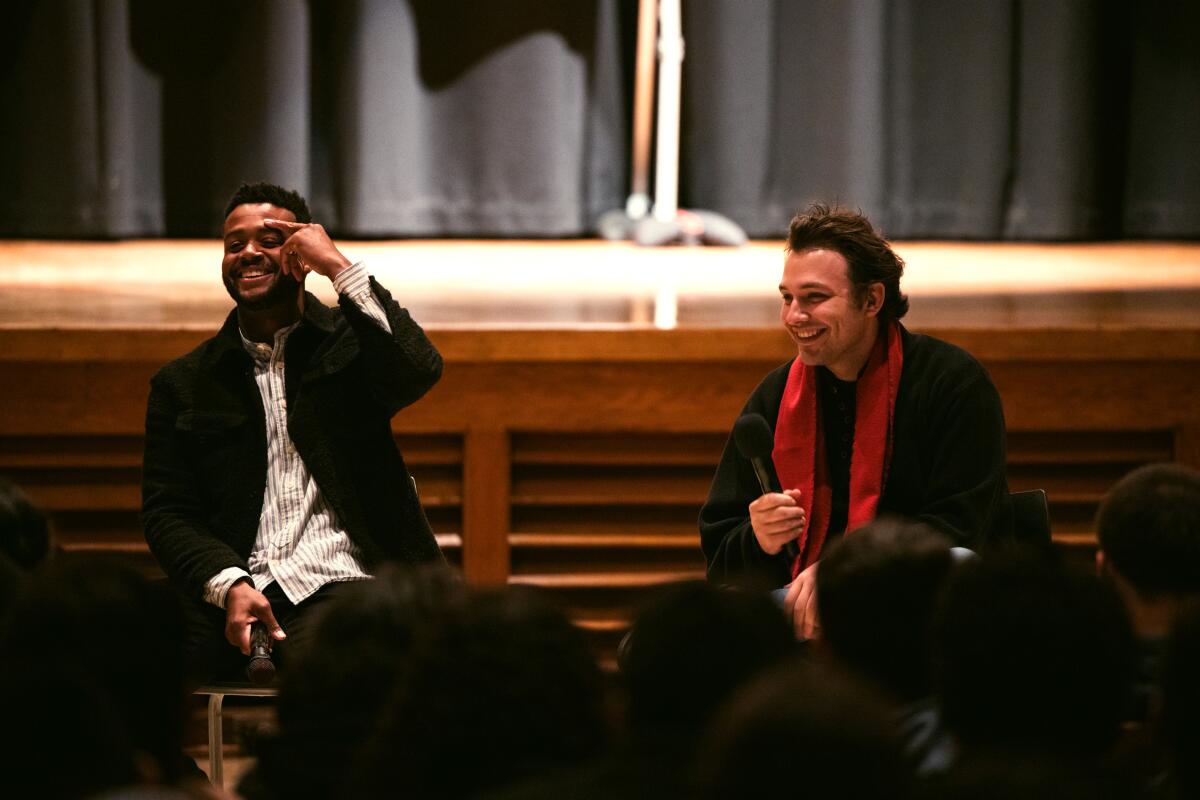
What went through your mind when you learned about this hidden jewel of a city-funded service, operating for six decades?
Kris Bowers: As a kid, you don’t think about that, right? When an instrument’s not working, you send it out, it goes somewhere, then it comes back and you’re excited to have it. I remember I spent so much time with the piano, expressing myself, playing songs and not thinking about how that was facilitated.
Ben Proudfoot: Steve [Bagmanyan], who’s the anchor and hero of the film, he tuned the piano at Kris’ elementary and middle school 20 years before.
Bowers: Finding out, “Wow, this place has been part of my musical journey?” It became exciting to get to know these people and how their craft is something that means so much to them as well.
Were the workshop’s employees eager participants?
Proudfoot: The four people you see in the movie are literally the only people who raised their hand to be interviewed. And it was one epic story after the next. Then Kris came in, said, “We have to interview the kids.” And it changed the movie.
Bowers: I think the thing that was so humbling about these craftspeople is that they’re doing this without ever getting to meet the kids; they never get the satisfaction of seeing relief on the kid’s face. So to me, it was this really interesting distance between two people that have this secret communication. That felt important to me.
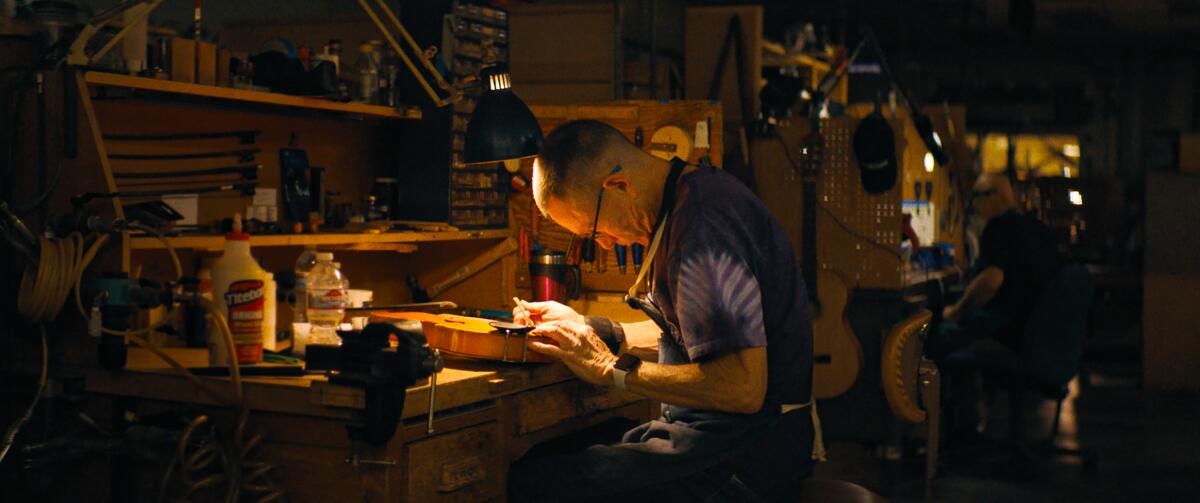
The close-up photography of the repair work is so lush. It makes the instruments look so beautiful and complex.
Proudfoot: What guided the look of the movie was the very real practice of putting a lightbulb down a saxophone, or anything with valves, to see if there’s a leak. That golden light within started the high-water mark for the visuals. And we made the decision to keep a bit of mystification around how the instruments work, because we prefer to look at them as a vessel of love. The warm mahogany tones of the stringed instruments, that classic brass glow, made for a really nice color palette.
After these touching stories, the final sequence with the featured students and craftspeople alongside LAUSD alumni, playing themes you wrote, Kris, is a wonderful grace note.
Bowers: It’s taking a risk putting a 9-year-old next to someone who played on “Jaws,” so that took a lot of consideration in the composition, and intentionality. But it always blows me away what musicians can do. They can instantly play it as if they’ve been playing it for years. It only happens in a handful of cities, and that’s why most scoring happens in L.A. for these emotional art forms.
Proudfoot: That historic convening of generations of LAUSD musicians was probably the most memorable day of production I’ve ever experienced.
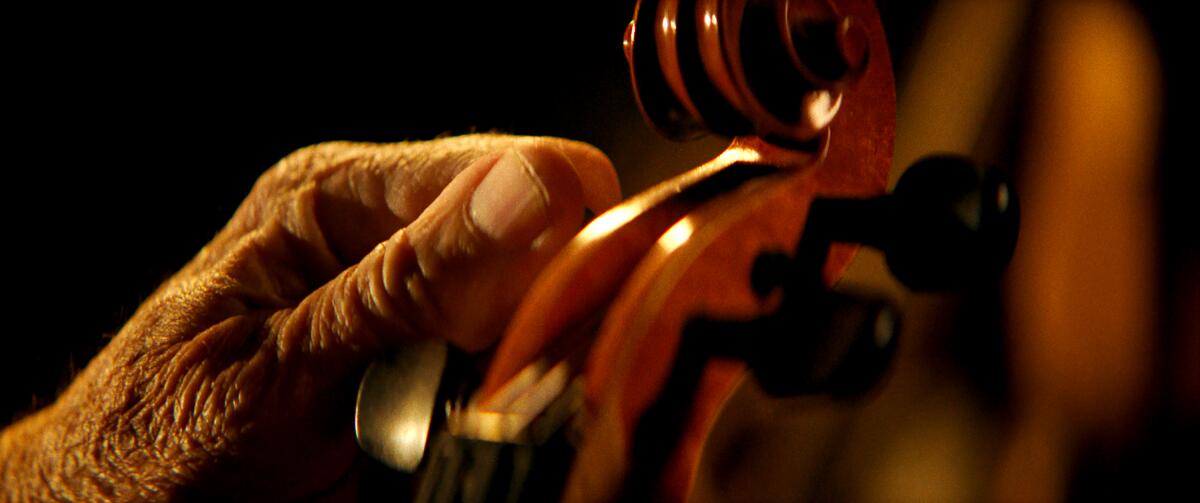
Based on the film’s reach, and the positive response from city leaders, is this repair shop — the only one of its kind in the country — better protected?
Bowers: At City Hall, someone said, “This space can never be closed.” So it really feels gratifying that there’s been such a reaction in people responsible for making those decisions. Hopefully, that ripples down as they pass their jobs to their successors and more people focus on how music is such a strong part of the beating heart of Los Angeles.
Proudfoot: I think it’s safer. But you can never say never. We hope to make it at least deeply unpopular to even question it. The advocates for the movie are on every street in Los Angeles, as long as we can speak with one voice.
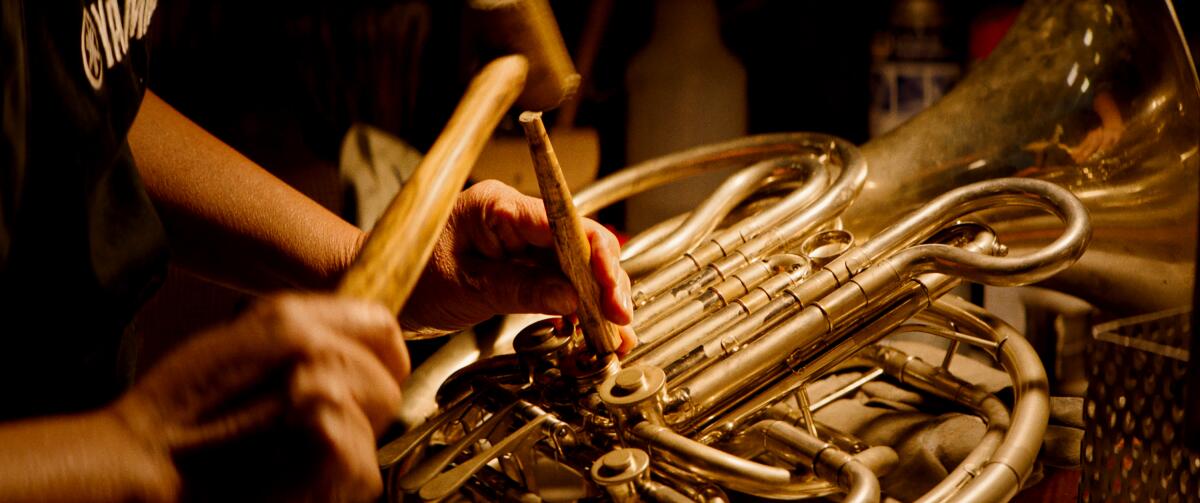
What keeps you both coming back to the short documentary for telling stories?
Bowers: We’re in an age where people want to watch something very quickly. So this is the space where you have the highest impact, with a very small amount of resources.
Proudfoot: The short documentary is noncommercial in its aim. It’s by far the most accessible, democratic, lowest-barrier-of-entry form of cinema. And in an age where so many millions of talented storytellers are kept out of our art form simply because of cost, the short provides a welcome ramp to people from all over the world. We did not make this to generate cash. We made this film because we thought, “This is a story that we think people need to hear.” It’s why we have it for free everywhere, on YouTube, Disney+, Hulu, Instagram, everywhere.
Sign up for The Envelope
Get exclusive awards season news, in-depth interviews and columnist Glenn Whipp’s must-read analysis straight to your inbox.
You may occasionally receive promotional content from the Los Angeles Times.